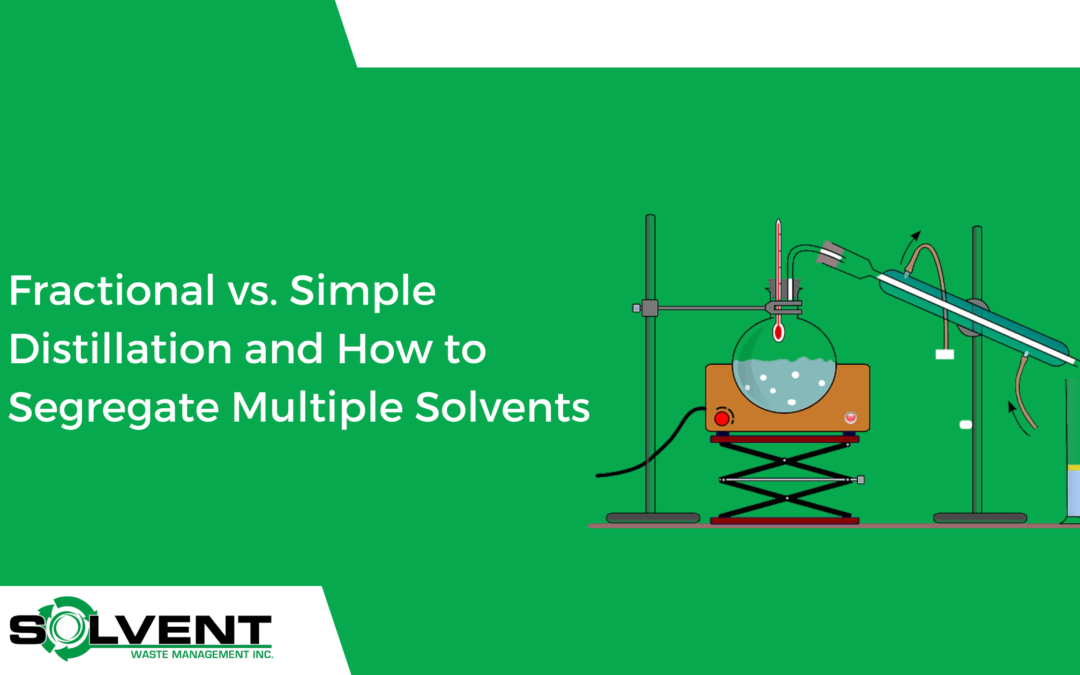Distillation is a powerful separation technique used extensively in various industries, including chemistry, pharmaceuticals, petrochemicals, and more. It allows for the purification and segregation of components from complex mixtures, particularly when dealing with liquids. When it comes to separating multiple solvents or purifying a mixture, two common distillation methods are often employed: simple distillation and fractional distillation. In this comprehensive guide, we will explore the differences between these methods, their applications, and how to effectively segregate multiple solvents.
Understanding Simple Distillation
Simple distillation is a straightforward process used to separate two or more components with significantly different boiling points. The principle is simple: heat the mixture to its boiling point, and the component with the lower boiling point will vaporize first. As the vapor rises through the distillation apparatus, it is condensed back into a liquid form and collected in a separate container. Simple distillation is most effective when the boiling point difference between the components is substantial, typically greater than 25-30°C.
When to Use Simple Distillation?
Simple distillation is suitable in the following scenarios:
- Separating Components with a Large Boiling Point Difference: It is ideal when dealing with mixtures where one component has a significantly lower boiling point than the others.
- Purifying Liquids: Simple distillation is often used to purify liquids by removing impurities or separating components with different volatilities.
However, simple distillation may not be effective when dealing with mixtures of closely boiling components or when there is a need to separate multiple solvents simultaneously.
Unpacking Fractional Distillation
Fractional distillation is a more advanced distillation technique that is employed when dealing with mixtures containing multiple components with relatively close boiling points. It utilizes a specialized column called a fractionating column or a distillation column. This column contains multiple trays or packing materials, which provide numerous surfaces for vaporization and condensation to occur repeatedly.
The fractional distillation process involves the following steps:
- Heating the Mixture: The mixture is heated in a flask, and the vapors rise into the fractionating column.
- Vaporization and Condensation: As the vapors rise through the column, they repeatedly vaporize and condense due to the packing material’s surfaces. This process allows for separation based on the different boiling points of the components.
- Collection: The separated components condense at different heights in the column and are collected in separate receivers.
Fractional distillation is particularly effective for mixtures where the boiling point difference between components is relatively small (typically less than 25-30°C). It allows for precise separation of multiple components even when they have similar boiling points.
When to Use Fractional Distillation
Fractional distillation is the method of choice in the following situations:
- Separating Components with Close Boiling Points: When dealing with mixtures where the boiling points of components are close, fractional distillation is essential to achieve effective separation.
- Segregating Multiple Solvents: It is ideal when separating and collecting multiple solvents from a mixture.
- Petroleum Refining: Fractional distillation is extensively used in petroleum refining to separate crude oil into various fractions, such as gasoline, diesel, and kerosene.
How to Segregate Multiple Solvents Using Fractional Distillation
Segregating multiple solvents from a mixture using fractional distillation involves several key steps:
Step 1: Setup and Preparation
- Apparatus: Assemble the fractional distillation setup, including the distillation column, heating source, and collection vessels.
- Fractionating Column: Ensure the fractionating column is packed with suitable material to facilitate vaporization and condensation.
- Mixture: Pour the mixture containing multiple solvents into the distillation flask.
Step 2: Heating and Fractionation
- Heating: Apply heat to the mixture in the distillation flask. Gradually increase the temperature to begin the distillation process.
- Fractionation: As the mixture reaches its boiling point, the vaporized components rise through the fractionating column. Due to the repeated vaporization and condensation, the components with lower boiling points will rise higher in the column.
Step 3: Collection
- Collection: Use multiple collection vessels to collect the separated solvents as they condense at different heights in the column.
- Temperature Control: Adjust the heating temperature carefully to ensure the separation of all desired solvents. Monitoring temperature is crucial to collect each solvent fraction effectively.
Step 4: Analysis and Refinement
- Analysis: Analyse the collected fractions to confirm their identities and purities. Analytical techniques like gas chromatography can be used for this purpose.
- Refinement: If necessary, repeat the fractional distillation process or perform additional purification steps to achieve the desired purity levels for each solvent.
Advantages of Fractional Distillation for Solvent Separation
Fractional distillation offers several advantages for segregating multiple solvents:
- Precision: It allows for precise separation, even when dealing with components with similar boiling points.
- Efficiency: Fractional distillation is efficient and can separate multiple components in a single process.
- Versatility: It can be applied to a wide range of mixtures, making it a versatile technique.
- Resource Conservation: By reusing recovered solvents, it conserves valuable resources and reduces waste.
- Industrial Applications: Fractional distillation plays a vital role in various industries, including chemical manufacturing, pharmaceuticals, and petroleum refining.
Conclusion
In the world of separation techniques, fractional distillation stands as a powerful method for segregating multiple solvents from complex mixtures. While simple distillation is effective for components with significant boiling point differences, fractional distillation shines when dealing with mixtures of closely boiling solvents. Its precision, efficiency, and versatility make it an invaluable tool in industries where the separation and purification of multiple components are essential. Understanding the nuances of both simple and fractional distillation allows for informed decision-making when selecting the most suitable method for your specific needs.

